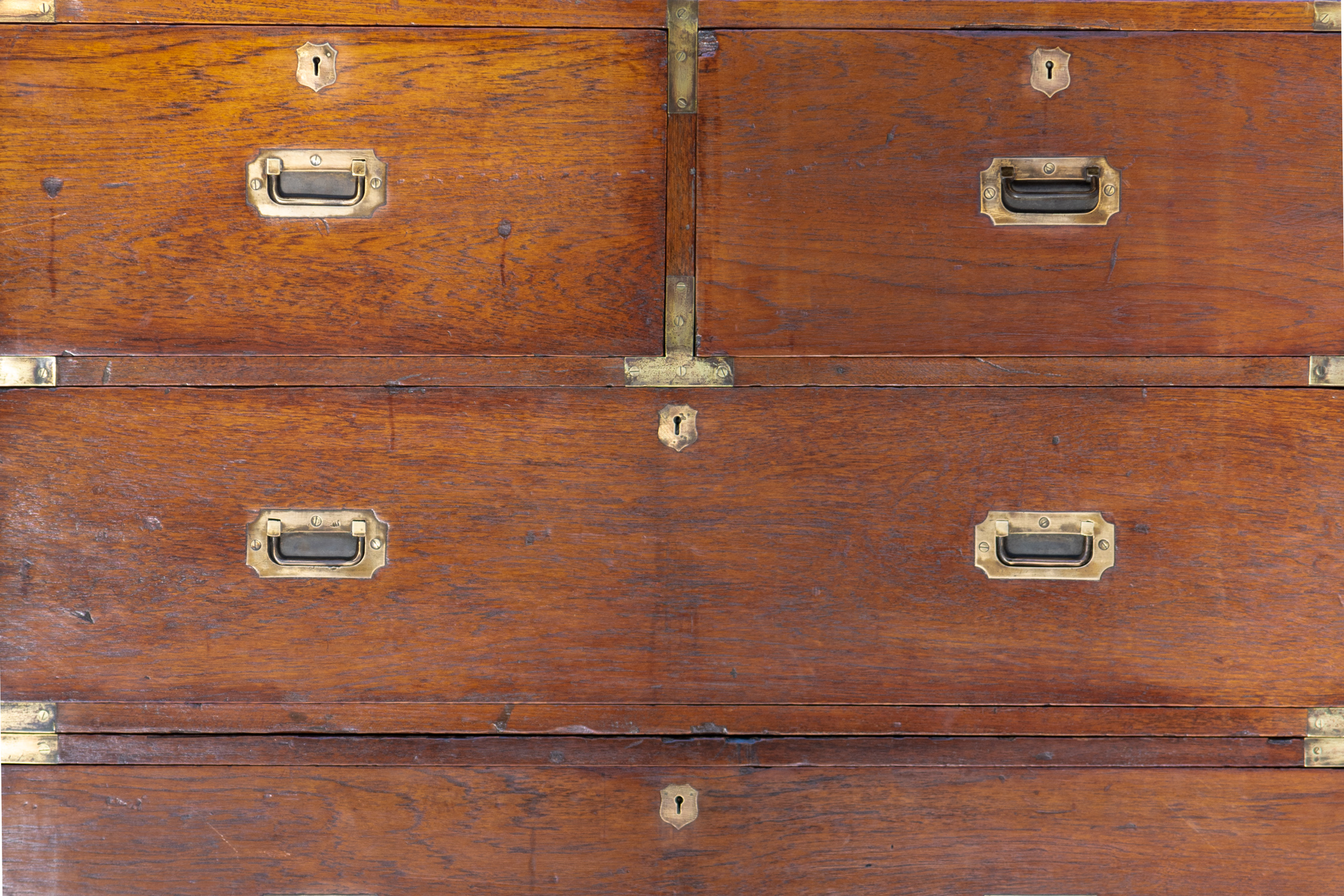Campaign Furniture Comes Home From the Wars

by Lisa Hammel, The New York Times, November 5, 1966
Nineteenth-century campaign furniture, is as square-shouldered and bristling with brass as a four-star general.
Campaign furniture refers to those normally austere pieces used by army officers in the field or naval officers at sea. The explanation for its popularity may lie in an offhand remark made by a furniture buyer, who recently referred to the style as “basically boxes.” Basically boxes is right, yet it is probably the simple rectangular lines of the pieces that make them work well in modern rooms, in many period settings or in a mixed decor. The austerity of shape is offset, however, by the warm gleam of brass hardware. Traditionally on these pieces, drawer pulls are recessed rectangles; corners are capped with metal, and sometimes a strip of metal edges the top of the chest or desk.
Although the idea of field furniture is as old as war, the pieces seen today date mainly from the Napoleonic era in style. Some authorities believe the chests were based on the much older portable oriental chests, the boxy frames of which were decorated with a similar metal trim. The military and naval chests of Napoleon’s day were made so they could be stacked, and many of today’s still can be. Handles on the sides facilitated carrying.
Almost all the old pieces are mahogany. Contemporary versions might be anything from rosewood to brightly colored lacquer.
While the pleces may no longer be used under the narrow panoplied tent, or inside the captain’s snug cabin, observers of today’s decorating scene point out that the add-and-subtract, semi-portable pieces have a peculiar usefulness for today’s space-cramped, on-the-move population.
Campaign Furniture Comes Home From the Wars, by Lisa Hammel, The New York Times, November 5, 1966, Section R, Page 36 – New York Times Archive.
Lisa Hammel (1928-2019) was a staff reporter with the New York Times covering women’s news and education. She later wrote about crafts, artists and exhibitions and interviewed figures such as Edward Albee in their homes. She won a major journalism award in 1969 for an interview with Dr. Spock. In 1978, she became founding editor of Antiques World magazine.
